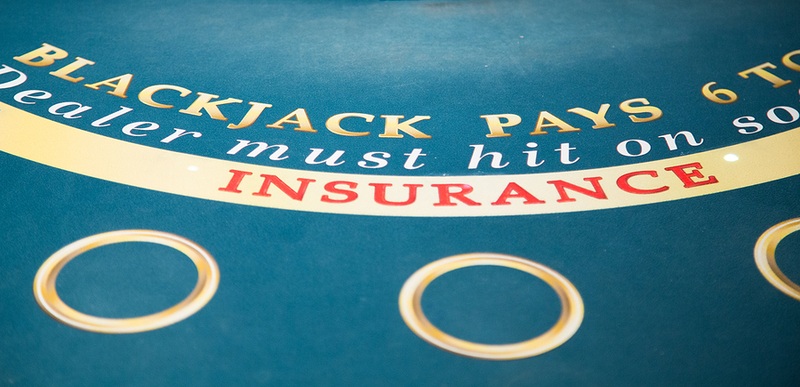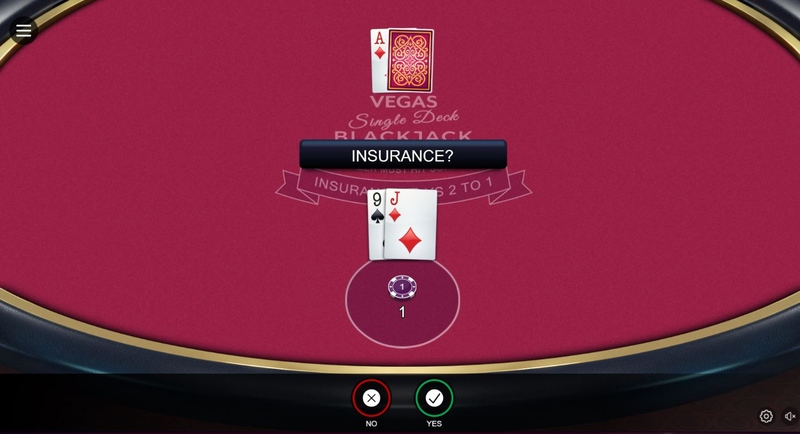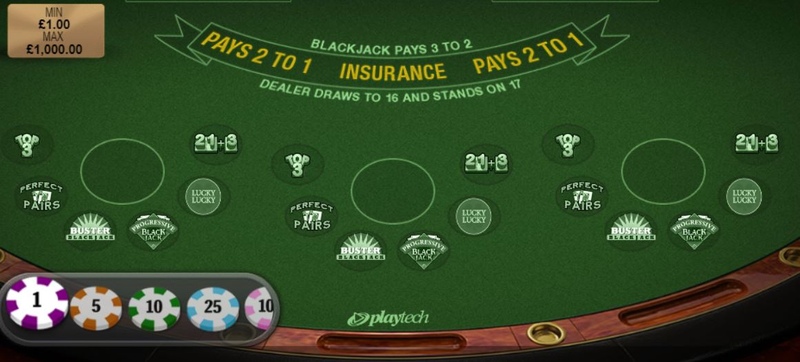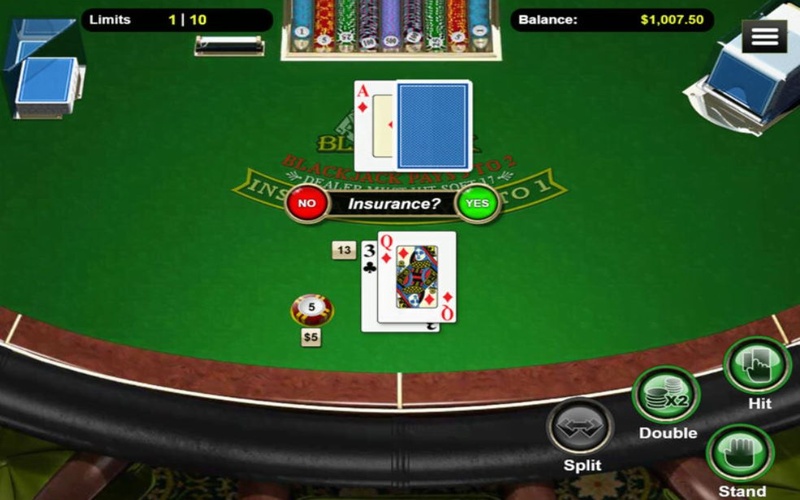Insurance bets have become a staple part of almost any online blackjack offering. Even the most exotic variants refuse to omit this often misunderstood side bet.
For starters, how does it work, and is it a good idea to take it?
Let’s take a look.
How Does Blackjack Insurance Work?
Insurance is supposed to offer a shield against blackjack hands that go wrong from the very beginning.
If the dealer is close to making Blackjack after the deal – i.e they are showing an Ace as their up card and could have a 10 in the hole – you can take insurance against that eventuality, but for an extra cost of course. The bet is sold as a good idea because the proportion of 10 value cards in the deck is high, comparative to other card values.
To take insurance, you must wager half of your initial stake, and you get a 2:1 payout if the dealer does indeed have a 10 alongside the Ace. This means you would lose the hand, but break even on your insurance bet.
However, if the dealer does not have a ten then the house keeps the insurance bet, and if you go on to lose the hand you will lose your initial stake as well, so your losses would be higher.
At first glance, this might seem like a neat way to minimise your losses and perhaps have in place as a fall back strategy. However, there’s more to blackjack insurance bets than meets the eye.
The house edge on blackjack is just 0.5% if using basic strategy, but the house edge specifically on the insurance bet is 5.8% for single-deck variants and goes up further when there are 6-8 decks, sometimes to as much as 7.5%.
Why Do Casinos Offer Blackjack Insurance Bets?

When you visit the blackjack rules at an online casino game, there’s often a short guide or intro included where the insurance bet will be promoted. It’s even printed on the table to encourage the player to use it. In online games the option to take insurance will often pop up and you have to manually accept or decline the offer before you can continue the game, so casinos do try and nudge you in the direction of the insurance bet.
There’s a reason. Let’s look at the numbers.
If you’re playing single-deck blackjack against the dealer, and they show an Ace, there are 51 possible outcomes from their hole card (if we ignore your own two cards for a second).
These include:
- 16 cards which will make blackjack (four tens, four each of Jack, Queen, and King)
- 35 cards which will not make blackjack (four 2’s, four 3’s, four 4’s, etc.)
With this in mind, there’s a 31% chance that the dealer will get blackjack, so a little over a 1 in 3 chance.
However, the casino only pays you 2:1. So not only are you being short changed, but even if the insurance bet wins the absolute maximum you can get back is your stake, you won’t come away any better off.
Betting on something with such a low probability of happening isn’t feasible in the long run, especially when the payout only leaves you at break even.
When Should I Use Blackjack Insurance?

The general advice is basically to never take insurance when playing blackjack. Statistically, over the long term you will end up worse off by doing so.
For the vast majority of players this rule will be accurate, and it’s nice and easy to remember too: Insurance? No.
That’s because the vast majority of blackjack players only play recreationally, and even those who would consider themselves more serious players don’t operate on the same level as blackjack masters.
In some very specific circumstances, a professional card counter or maths genius might choose to take the offer of insurance, but they would have a lot going on in their head before they made that call.
Basically the dealer’s chances of getting blackjack need to be at least 33% for the insurance bet to be worth the risk, and the only way to have that knowledge is to have played through enough of the shoe to have seen the value of a large number of cards that have already been used – and an awful lot of them will have had to be 10s.
The more decks used the harder this will be to do, and single deck blackjack is pretty rare these days precisely because it is so easy for professionals to take advantage of.
You might hear some people recommending to insure a strong hand against a dealer’s potential blackjack, but it’s bad advice. The strength of your hand has very little to do with the likelihood of the dealer getting blackjack – even if you have two 10 value cards in your hand, meaning there are two less in the deck that could possibly be the dealer’s hole card, the impact on the dealer’s chance of getting blackjack are not enough to warrant taking the bet.
What Are Some Alternatives to the Insurance Bet?

There is no other bet that serves the same purpose as insurance, but there are other side bets available to players with some variations of the game.
Which ones are available, if any, and in what sort of number will depend entirely on the game designer or manufacturer, but side bets can be tagged onto any blackjack variation really, since they run alongside the main game rather than having any sort of impact on it.
You can think of them as hangers on if you like; they couldn’t exist without the base game, but the base game can continue quite happily without the side bet being present.
Two of the most commonly found examples are:
- 21+3: This side bet tries to make a poker hand out of your two cards and the dealer’s upcard. The possible outcomes are Flush (15:1), Straight (10:1), Three of a kind (30:1), Straight Flush (40:1) and Suited three of a kind (100:1). The bet is over once the first cards have been dealt.
- Perfect Pairs: Only applies to the player’s first two cards. If they have the same number but different colours, the payout is 5:1. If only the suits don’t match, it’s 10:1, and identical cards yield a 30:1 return.
There are many more though, and we have another post that covers them in more depth.
